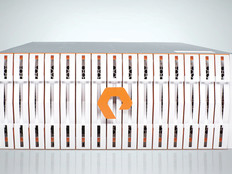Lifelong Learning Credentials Require Both Technology and a Trust Framework
There has been much discussion recently about the value of credentials in helping students demonstrate the skills required for career success and the need to transform how students collect and share these credentials.
These valuable discussions point to exciting changes in the role of higher education, in which students may have access to a portfolio of skills demonstrations throughout their lifelong learning journey.
Unfortunately, from a technological perspective, conversations about how to realize this vision often devolve into something much less exciting: requirements around establishing identity, formatting data, and designing interfaces to ensure consistency and interoperability across all transactions, often through the use of standards and standardization.
Similarly, as with many conversations around how technology will support innovation in education, this topic sometimes centers on a particular solution, such as blockchain.
The downside of this devolution is that it obfuscates a critical question: How might technology support a new vision of lifelong learning and skills attainment?
We need to answer this question in a way that helps us understand the critical components of the relationship between this vision and technology, to see the areas in which technology can genuinely provide value and where it might fall short.
Driver’s License Model Reflects the Role of Trust and Authenticity
We already have a model we can use to understand how this might work: driver’s licenses. The majority of us have used our licenses to validate our identity, provide proof of our abilities or gain access to specific places and activities.
While these activities may seem simple, they depend on a complex relationship of trust between the issuer and reviewer. It’s a relationship in which the driver’s license represents an official certification of who you are and what you can do.
At its core, the trust question in higher education requires three components to ensure that individuals, organizations and devices have valid access, exchange, use and transfer of information:
- Security: Proper security makes it possible for all parties to accept that there have been no unauthorized changes to the information.
- Validity: Validity means all parties can accept that the information and identities are authentic.
- Portability: Portability allows all parties to access and show information in different environments. Therefore, it appears that to understand fully how technology can support the new vision of student skills attainment, we should first establish how it provides these three components.
Technology Supports the Trust Framework for Credentials
It should be clear that technology could support the security aspect of the trust framework. Identity and access management solutions, for example, have long handled the provisioning and verification of identity, as well as the linking between credentials and identities.
Likewise, technology can support the ability to recognize that a credential is valid — that is, issued by a recognized authority — similar to the process of identity verification. Last, with the use of portals, students can access their credentials anytime, from anywhere, which would undoubtedly support the portability component of a trust framework.
Equally clear, however, is that these technological activities are necessary but not sufficient. For a trust framework to be successful, there must be much more than simply a technological underpinning.
For example, there must be agreement about the significance of the shared information and understanding that certain information applies to given contexts. As with the driver’s license example, there are agreements about what licenses can certify (identity and driving ability) and where they are applicable (between states, but not between countries, for example).
Technologies such as blockchain and credentialing platforms may be necessary for the vision of where higher education may go. Yet other pieces of the puzzle are equally important.
I hope that viewing a trust framework through the lens of its key components — and not in terms of technology — will help us identify and focus our attention on what is necessary to help students attain, store and share demonstrations of their skills over their lifetimes.










